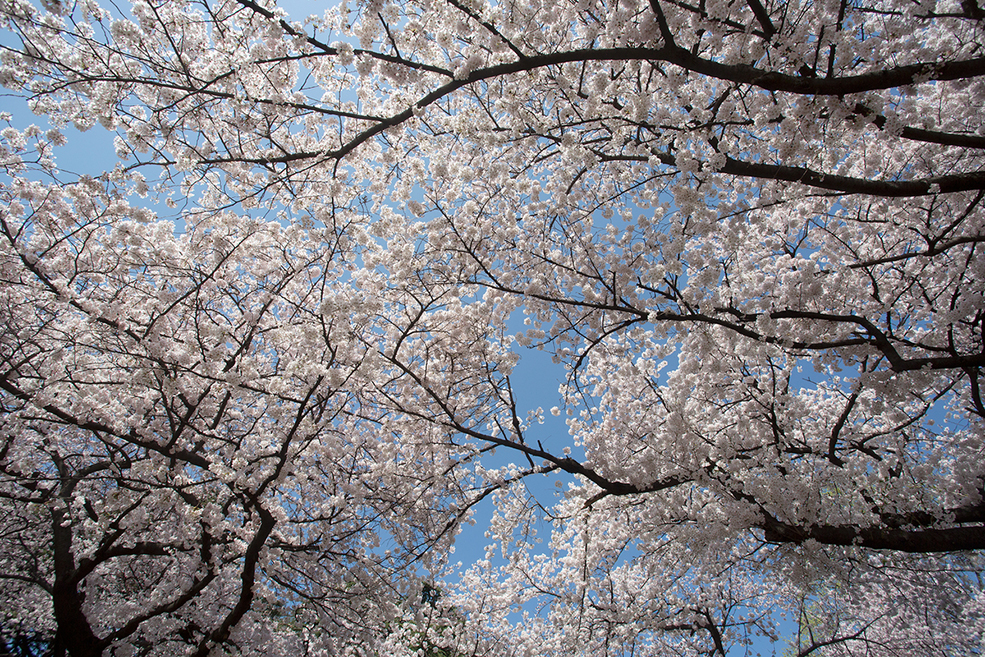The exquisite bloom of life
Japan’s cherry blossom festivals celebrate life's ephemeral nature




(Tony Burns)The cherry blossom bloom is the perfect time to be in Tokyo, says photographer Tony Burns, who traveled to Japan recently."Hanami (or 'flower viewing') parties spring up all over the city as people descend on parks and sit beneath the thousands of cherry blossom trees, catching up with friends over a beer and picnic," he says. In fact, the Japanese are so passionate about their annual blooms that they use apps to track their progress and rely on meteorologists, who include the seasonal high points in their forecasts, to plan optimal viewing.


(Tony Burns)While today's viewing parties are peppered with iPhones and selfie sticks, the quaint tradition of sitting beneath an awning of pink blooms dates back to the eighth century. Back then, the trees grew almost exclusively in Japan's mountainous region. And every spring, villagers would travel to these remote locales to worship the trees. Eventually they began transplanting the cherry trees from the mountains to the more populated areas. The trees, they believed, carried the soul of the mountain gods and helped sustain the critical rice paddy crop.


(Tony Burns)Over the centuries, the cherry blossom came to represent the Japanese spirit and soul. It was celebrated by the elites of the Imperial courts, inspired art and poetry, and exemplified the samurai nobility — the men who do not fear death.Indeed, the delicacy and brief life span of the stunning flower provided its most sustaining symbolism — the intensity and ephemeral nature of life. During World War II, when Japan was near defeat and desperate, kamikaze pilots affixed cherry blossom branches to their uniforms and painted blossoms on the outside of their planes before departing for their final flights.


(Tony Burns)Today, Tokyo's cherry blossom festivals still pulse with this melancholy beauty. "Cherry blossom comes and goes pretty quickly and strong winds can bring the whole thing to an end," Burns says. "For the Japanese, this represents how fragile and beautiful life can be, yet also tragically short. More than coming together to marvel at the trees, it's a time to simply enjoy and appreciate life with friends and family, enjoying the little things, really."And it's thanks to the Japanese that Americans can enjoy such beauty stateside. As a symbol of friendship and political alliance, the Japanese government gifted Washington, D.C., with 3,000 cherry trees after William H. Taft took office in 1912.


A free daily email with the biggest news stories of the day – and the best features from TheWeek.com
Lauren Hansen produces The Week’s podcasts and videos and edits the photo blog, Captured. She also manages the production of the magazine's iPad app. A graduate of Kenyon College and Northwestern University, she previously worked at the BBC and Frontline. She knows a thing or two about pretty pictures and cute puppies, both of which she tweets about @mylaurenhansen.
-
 US citizens are carrying passports amid ICE fears
US citizens are carrying passports amid ICE fearsThe Explainer ‘You do what you have to do to avoid problems,’ one person told The Guardian
-
 All roads to Ukraine-Russia peace run through Donetsk
All roads to Ukraine-Russia peace run through DonetskIN THE SPOTLIGHT Volodymyr Zelenskyy is floating a major concession on one of the thorniest issues in the complex negotiations between Ukraine and Russia
-
 Why is Trump killing off clean energy?
Why is Trump killing off clean energy?Today's Big Question The president halts offshore wind farm construction
